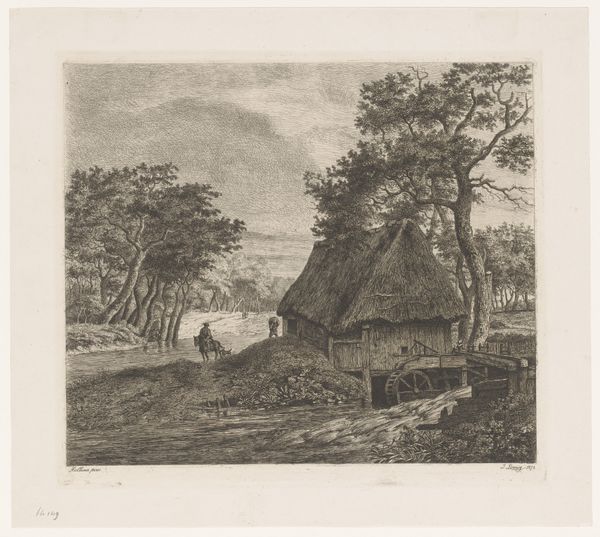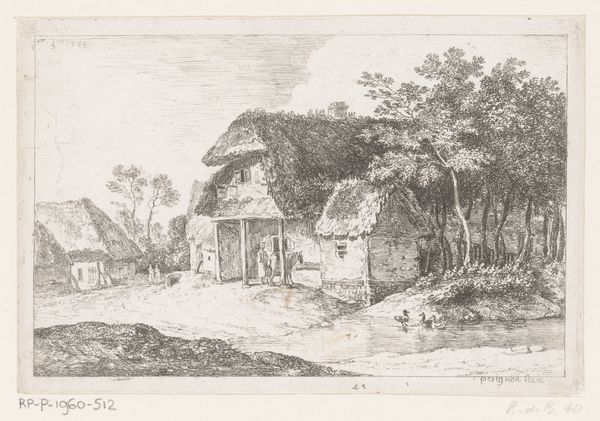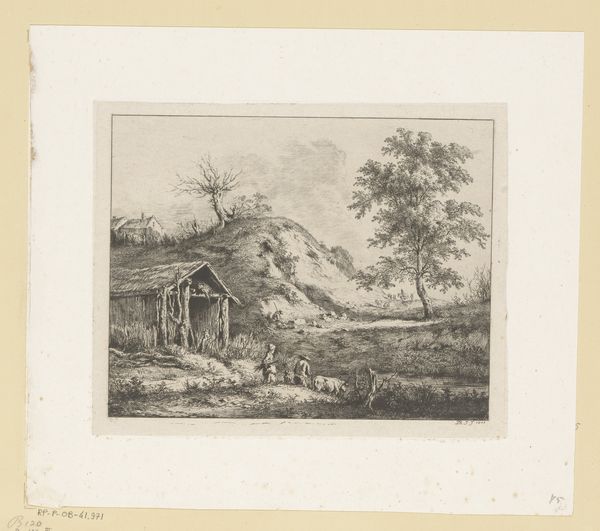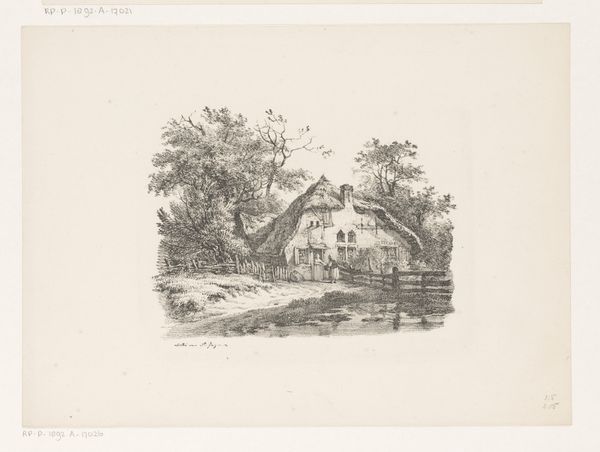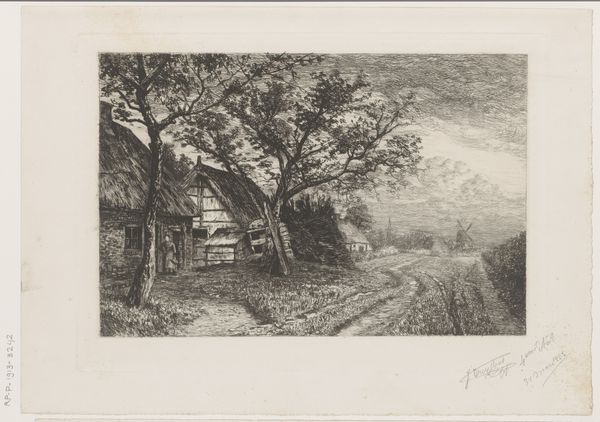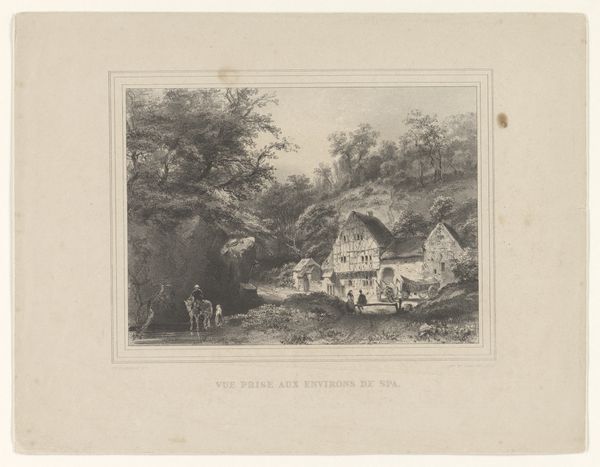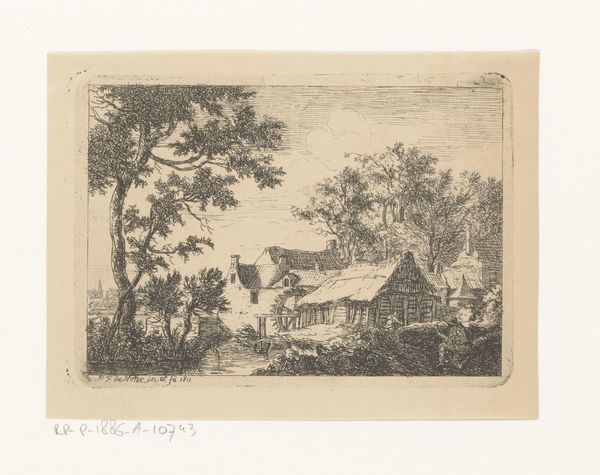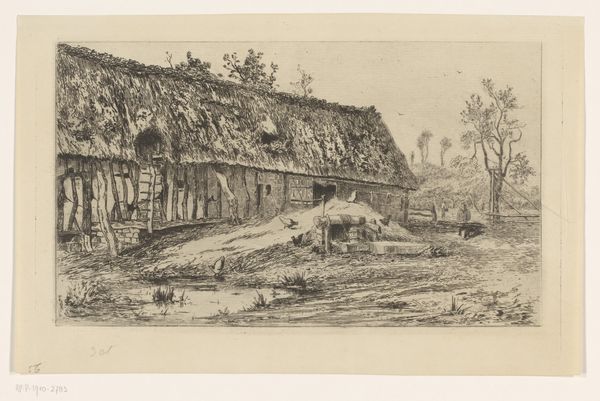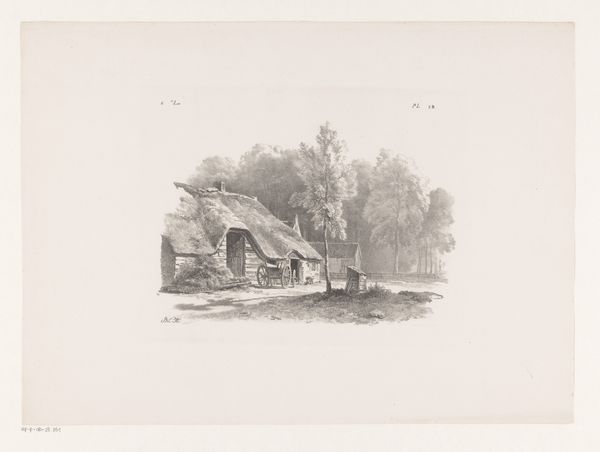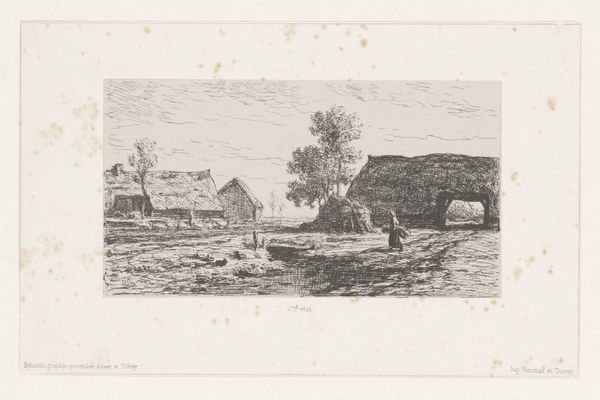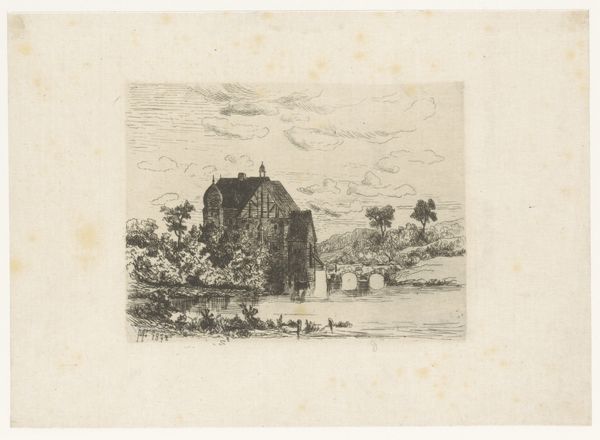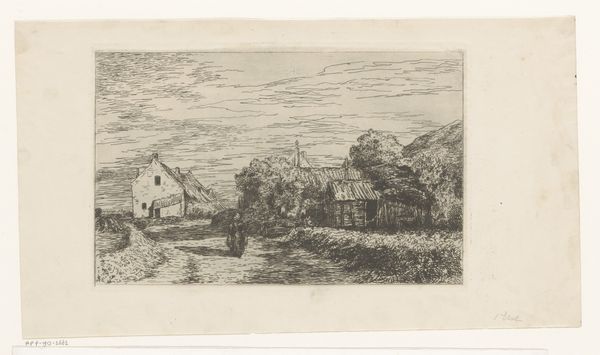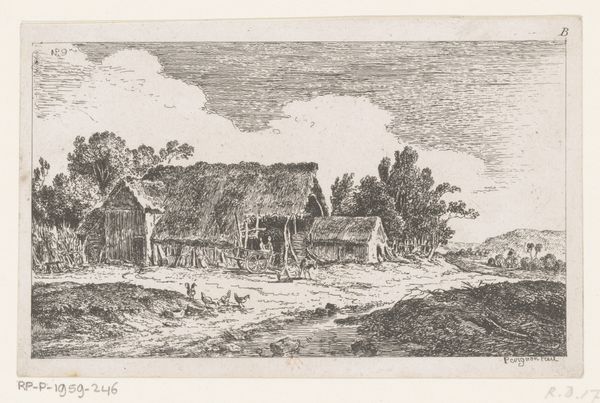
print, etching
# print
#
etching
#
landscape
#
etching
#
pencil drawing
Dimensions: height 244 mm, width 281 mm
Copyright: Rijks Museum: Open Domain
Curator: The delicate lines really draw me in—it feels so detailed. I see a definite rural stillness. Editor: Let’s take a closer look. This is "Landscape with Watermill" by Jean Théodore Joseph Linnig, created in 1872. The print utilizes the etching technique. Considering the time, let’s delve into its creation. What was the printmaking landscape then? Curator: Absolutely. Mid-19th century printmaking was undergoing a democratization. Etching, with its relative ease compared to, say, engraving, opened up artistic expression to a wider segment of society. Consider how gender and class played into artistic accessibility at this time. Was Linnig consciously exploring a democratic medium? Was the image of the landscape, itself tied to concepts of labor and land ownership, connected? Editor: It is true that the etching allowed for finer lines than traditional engraving; therefore, maybe he wasn't thinking democratizing as you imply but chasing a more photographic sense of realism? He uses a lot of what I see here to denote all of these surface textures on the building itself. These are everyday labor, these were things in use constantly. Look at the wooden beams—it's not abstract labor but highly specific. Curator: A sharp reading, I appreciate you grounding me. I do get caught up in broader narratives! But considering your emphasis, notice how this watermill presents labor. Are the people anonymous, universal workers or individually represented in terms of gender and roles? This choice, consciously or unconsciously, speaks volumes. Is he celebrating or romanticizing their plight? What were his personal beliefs and relationships towards the labor happening within these structures? Editor: Right, the individual's contribution to a larger social and economic fabric... Etching lent itself well to reproducing detail, to cataloging specific labor processes, but here is about celebrating the labor more than focusing on the worker. He is focused more on the wheel of progress. But your ideas are compelling... Curator: Agreed, the romanticized ideal shines here as the artist's position within class hierarchies comes into focus. Thank you for pushing me to look closer. It's a valuable reminder that art exists within a complex web. Editor: And for bringing awareness to what social impacts exist. To remember how we both view these works with different, yet meaningful interpretations.
Comments
No comments
Be the first to comment and join the conversation on the ultimate creative platform.
